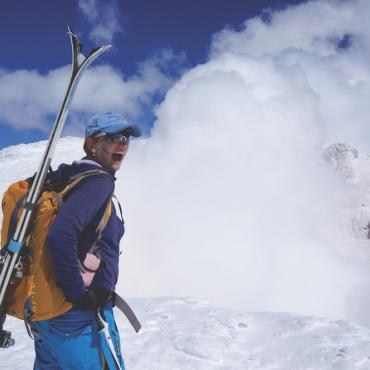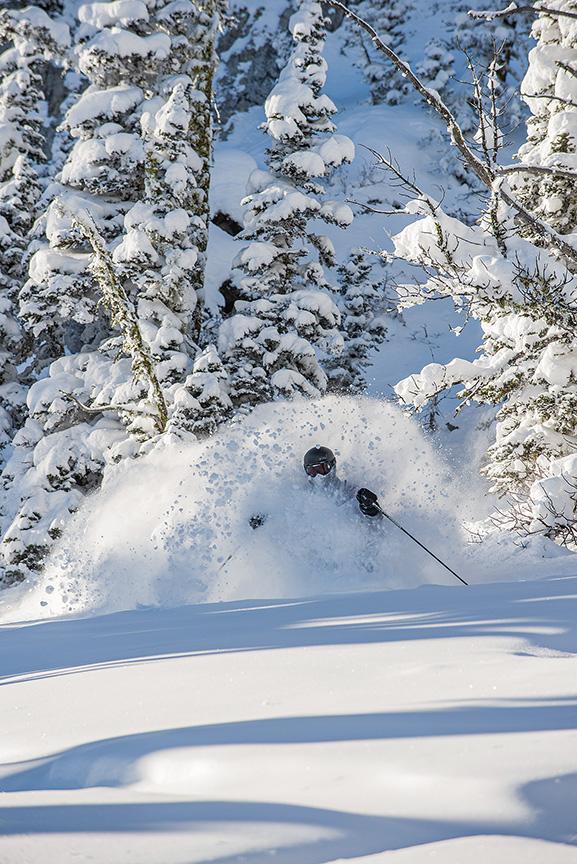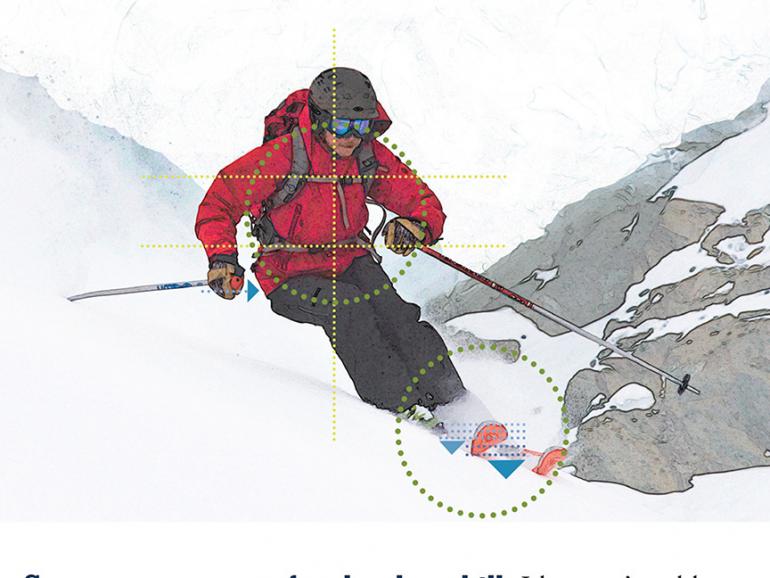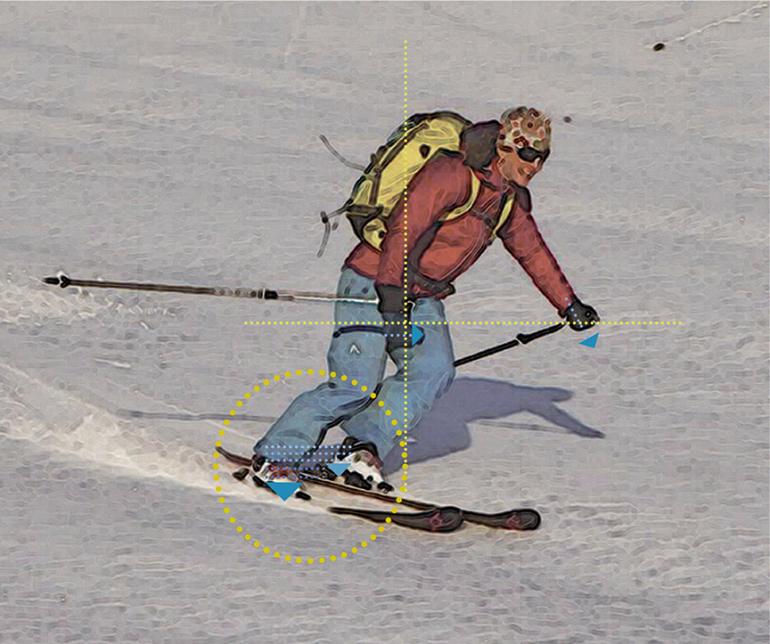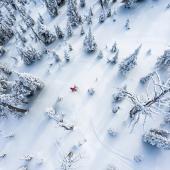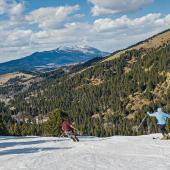Practice Makes Perfect
Downhill skills for the backcountry.
After three hours of laborious skinning, you’re grinning as you gaze down into a powder-filled bowl, ready for your big reward. You ease off the cornice, get up to speed and start your first turn. Rather than the ski-movie perfection you’ve been daydreaming about, one ski darts out from under you and you find yourself immersed in a struggle. Your quads are searing after the long climb and the added effort to regain your balance takes a heavy toll. You manage to make it down in one piece, but as you look up at your less-than-perfect arcs in the snow, it’s hard not to feel deflated. I climbed all the way up here for that?
To add further insult, your two partners float down the slope effortlessly and playfully, and conclude their run with high-precision hockey-stops that blow snow into all your open zippers.
Okay, seriously: what does it take to ski as well as your irritatingly capable partners?
While good skiing is universal, whether it’s inbounds or out, the backcountry is a special situation. Untamed snow brings a host of challenges, many of them hidden until you’re in the thick of it. Here’s a list of essential moves that can bring efficiency and versatility to your ski technique, making backcountry forays even more fun and addictive.
Be light on your feet. Most skiers know that you should stand primarily on your outside ski throughout a turn (You did know that, didn’t you?). But don’t be too quick to transition your weight to that ski. Ease gently onto the outside ski; don’t stomp on it abruptly. If you are too heavy-footed, your ski can plunge down into deep snow, get caught up on wind slab, or slide out on ice. You definitely do want to commit to that outside ski, but make sure you get there gingerly. The more variable the snow, the more you might find yourself tiptoeing onto the new ski.
Don’t lean into the hill. When we’re feeling intimidated, we tend to lean in toward the hill. While this is a natural response in tough spots, it compromises your ability to accurately guide your skis. This habit can be tough to break, but a good way to start is to keep tabs on your inside hand. Is it reaching down toward the snow or twisting behind you? If so, stop it. Tighten your core to keep from over-twisting. Then reach for the snow with your outside hand, not your inside one. This will keep your shoulders level and will direct your weight onto the outside ski, which is right where you want to be.
Be adaptable with edge angle. In “sensitive” snow that is breakable or otherwise funky, a flatter edge angle will often serve you better than a hard carve. Put the skis on edge softly, and they’ll feel surfy and nimble, rather than railed into the snow. This move also helps you stay balanced accurately over the outside ski (Hmm, noticing a theme about that outside ski?). Incidentally, this won’t work too well if you’re leaning into the hill, which cranks up the edge angle.
Stand up tall and stay over your feet. The climb up will have used up, let’s say, 80% of your quads’s capacity. How would you like to spend your remaining 20%? By leaning back and fighting for balance? Probably not. Any time you find yourself drifting back or crouching down, strive to get out of that position and stand up tall. A loaded backpack further penalizes an off-balance stance, so this tip pays big dividends in the backcountry.
Observe your partners. Yes, you are already watching them for avy safety, but there is a lot more that can be learned when someone sets off down a run. What tactics are they using? What is (or isn't) working for them? Make a mental plan for your own run while you are watching and gathering information. See that wind slab where they face-planted? Yeah, avoid that spot.
Save some energy for the downhill. I know it’s noble to go fast and long without showing any signs of weakness, but don’t burn yourself on the skin track and arrive at the top with a completely empty tank. The downhill you’ve worked so hard for is going to be miserable with useless, quivering legs. It’s up to faster/fitter companions to keep an eye on the group and manage the day accordingly. Slower partners, speak up for yourself before you run out of gas. Bonking quietly will not help the group travel any faster.
Becoming a better skier takes practice. Your enviable partners may have been ski racers or were lucky enough to grow up as a Bridger Bowl Mitey Mite. Good ski habits take years to engrain, and bad habits take discipline to eradicate. Dedicate some time to slow down, back off the gnar, and up your skills. The rewards, just like that hidden stash of pow you climbed all day for, will be sweet.
Karin Kirk (karinkirk.com) is a freelance writer and a Bridger Bowl ski instructor, staff trainer, and Ridge guide. She wouldn’t dream of dusting her backcountry partners with hockey-stop spray.

